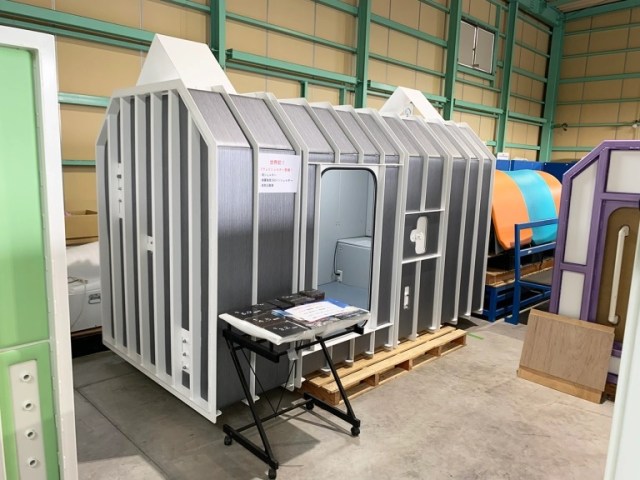
Seiji learns about the importance of “positive pressure.”
On his recent trip to Hokkaido, our Japanese-language reporter Seiji Nakazawa experienced some of the most wide-open scenery the prefecture has to offer. Today, though, he’s going the opposite route, with a visit to Japan’s number-one maker of disaster and emergency shelters.
World Net’s headquarters is in Tokyo, but Seiji paid a visit to the company’s showroom in Yaizu, Shizuoka Prefecture.
His guide for the day was none other than the company’s president, Hiroki Nakajima. World Net is the only company in Japan that handles both emergency shelter design and assembly, and the impetus for their shelters came when Nakajima visited Ishinomaki, one of the worst-hit towns in the 2011 Tohoku tsunami. “After that, I wanted to make something that could protect people” Nakajima says, and the first shelters World Net built were tsunami shelters.
▼ Hiroki Nakajima
World Net has since expanded its line to include earthquake shelters, flood shelters, and nuclear shelters, and it’s an example of that last category that Nakajima would be showing Seiji on this day.
“For a nuclear shelter, it’s critical that it be able to achieve positive pressure quickly,” Nakajima explained, referring to a condition in which the air pressure inside the shelter is higher than the environmental air pressure outside it. “You can’t achieve positive pressure unless the shelter is completely sealed, so when you do have positive pressure, the interior is protected against radioactive material outside.”
“From the time between when a missile is launched somewhere and the Japanese government can sound an alarm for the civilian population, it takes about five minutes, and then there’d be about another five minutes before the missile hits Japan. So unless you can achieve positive pressure in that amount of time, allowing for the time it takes to get into the shelter too, there’s no point, so that’s why the speed of creating positive pressure is so important.”
It all made sense to Seiji’s layman ears, but he also couldn’t help wondering what being in a space with positive pressure does to your body. Would it put your lungs in a vice grip, rendering you incapable of drawing breath? Would it make your eyes explode?
Both curious and terrified, he decided to find out.
Stepping into the shelter, there was about as much floor space as a king-sized mattress would take up. At 165 centimeters (65 inches) tall, Seiji had enough room to stand up straight, and Nakajima informed him that World Net can make shelters of different dimensions by customer request.
Looking to his left, Seiji saw an air conditioning unit and a TV. The TV is probably so that you can watch news reports and government announcements, but it’d also probably come in handy if Seiji wanted to pass the time while watching some anime until it was safe to come back out of the shelter. The shelter has its own power supply, but you can also hook it up to the electrical grid and even attach a Lan cable for Internet access.
On the opposite wall was some sort of machinery with a serious cyberpunk aesthetic to it. This, Nakajima explained, is the positive pressure-producing apparatus.
“Let’s turn it on,” Nakajima said, closing the door and activating the device. Seiji, still anxious about what sort of effects the extra air pressure would have on his body, began thinking of all the things he still wanted to do in life, as long as he survi-
Without warning, a fan mounted in the ceiling began to spin.
“OK, that’s it, we’ve got positive pressure,” Nakajima nonchalantly explained.
Wait, what? Seiji didn’t feel any different. He could still breathe, and neither one of his eyelids had ruptured.
“Feels pretty normal, doesn’t it?” Nakajima said, apparently knowing what Seiji was thinking. “It’s just three percent higher than the outside air pressure, so the most you might feel is a little bit of extra pressure in your ears, but even then it’s less noticeable than driving into a highway tunnel.”
▼ It was comfortable enough that if he’d had his laptop with him, Seiji could have typed up his report right there inside the shelter.
So how much does a shelter like this cost? The one Seiji tried out, which is listed as a two-person shelter, is 8.8 million yen (US$63,300), but a one-person shelter of the same type would be 6.8 million yen. Another factor is the thickness of the walls. The shelter Nakajima had shown him has 3.2-milimeter (0.13-inch) thick walls, the thinnest World Net offers but still strong enough to withstand the air pressure impact of a missile hitting 10 kilometers (6.2 miles) away. On the other end of the spectrum, the maximum-thickness 36-millimeter walls are calculated to be effective against an impact five kilometers away, and Nakajima is confident that even a tank smashing into the walls won’t break them.
A 36-millimeter-wall two-person shelter will run you about 12.8 million yen. Seiji couldn’t help thinking that with that much money, he could buy a Porsche, but if a missile is ever headed his way, he figures he’ll probably want to be inside something sturdier than a sports car at the time.
Related: World Net
Photos ©SoraNews24
● Want to hear about SoraNews24’s latest articles as soon as they’re published? Follow us on Facebook and Twitter!
[ Read in Japanese ]


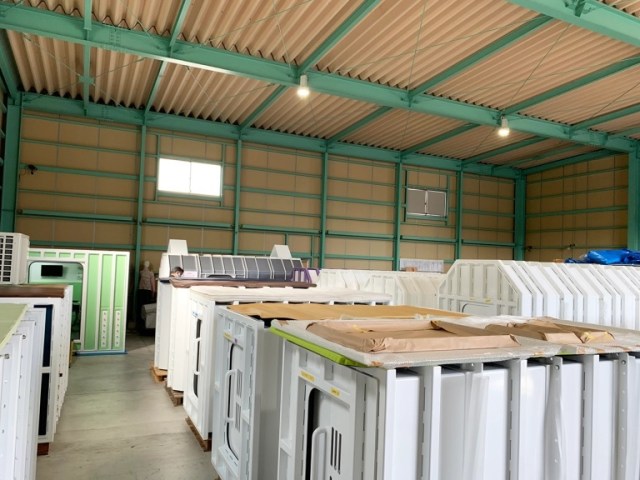
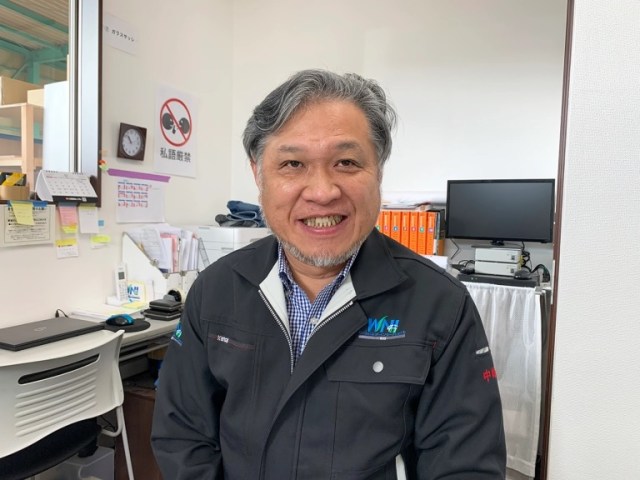
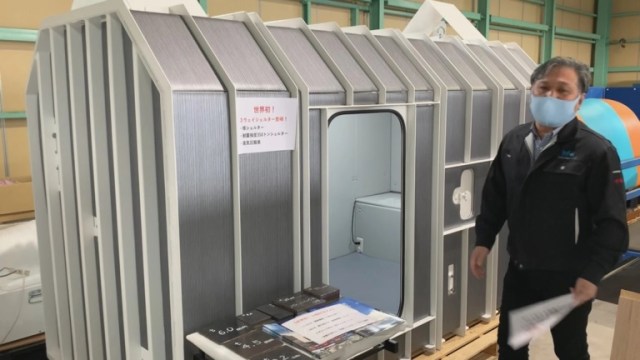
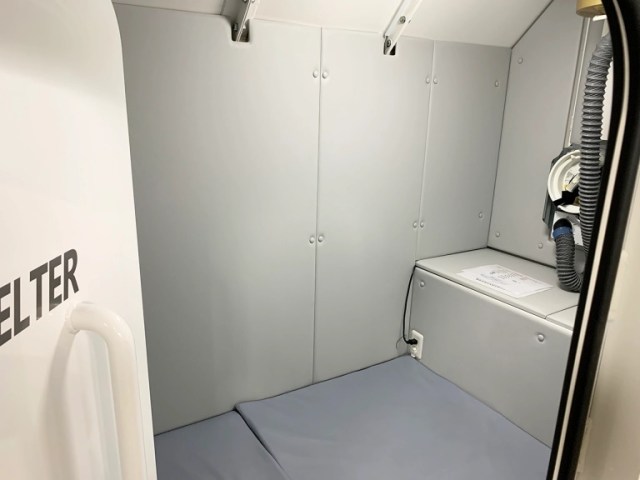

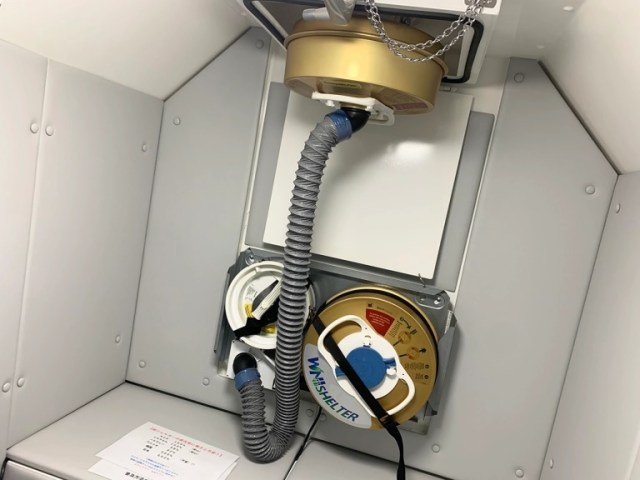
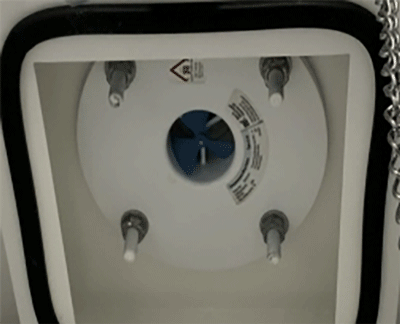
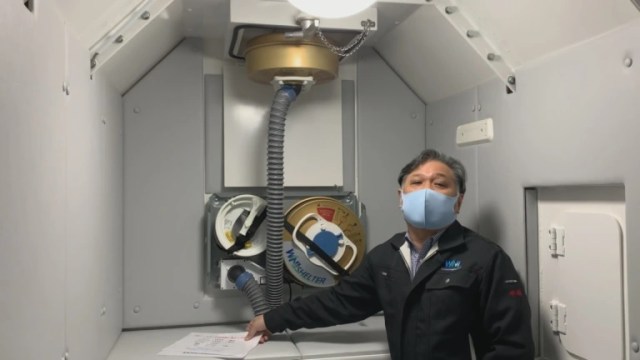
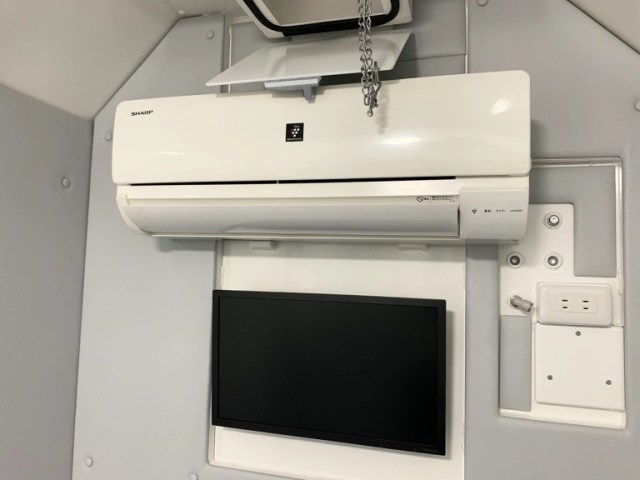
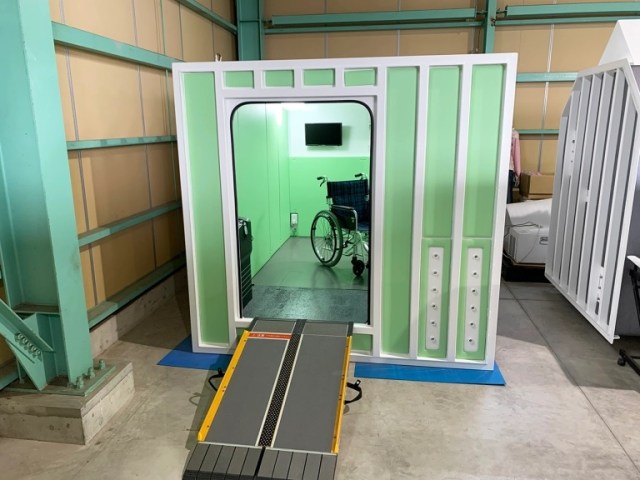
 We attend one of Japan’s most important press conferences this year, dressed as Vegeta【Photos】
We attend one of Japan’s most important press conferences this year, dressed as Vegeta【Photos】 Daiso sells “emergency shelters,” and they have an amazing visual trick【Photos】
Daiso sells “emergency shelters,” and they have an amazing visual trick【Photos】 A visit to Japan’s cursed tunnel and statue of Oshima Zuido【Haunted Japan】
A visit to Japan’s cursed tunnel and statue of Oshima Zuido【Haunted Japan】 Life after the band — how a former guitarist in a punk band became a fair trade barista
Life after the band — how a former guitarist in a punk band became a fair trade barista Our four must-visit saunas in Japan for total relaxation
Our four must-visit saunas in Japan for total relaxation Private booths are coming to Japan’s Shinkansen bullet trains even sooner than we’d thought【Video】
Private booths are coming to Japan’s Shinkansen bullet trains even sooner than we’d thought【Video】 Rakuten randomly offers 58 New Year’s osechi feasts in Japan, but did we get a star or a dud?
Rakuten randomly offers 58 New Year’s osechi feasts in Japan, but did we get a star or a dud? Top Japanese cosplayer Enako returns to Comiket after 6 years, creates mayhem with admirers
Top Japanese cosplayer Enako returns to Comiket after 6 years, creates mayhem with admirers The Purple Lucky Bag from Village Vanguard is an extra-large waste of money
The Purple Lucky Bag from Village Vanguard is an extra-large waste of money A surprising number of Japanese youth get most of their income from their parents
A surprising number of Japanese youth get most of their income from their parents Young Japanese adults show lowest dating experience level yet in annual survey
Young Japanese adults show lowest dating experience level yet in annual survey The top 70 words that keep showing up in Japanese light novel titles (and yes, isekai is one of them)
The top 70 words that keep showing up in Japanese light novel titles (and yes, isekai is one of them) How to do an overnight bus trip to Hirosaki from Tokyo – Part 1【Photos】
How to do an overnight bus trip to Hirosaki from Tokyo – Part 1【Photos】 Stamina-destroying “Paralysis Noodles” are Tokyo’s newest over-the-top ramen innovation
Stamina-destroying “Paralysis Noodles” are Tokyo’s newest over-the-top ramen innovation Five things that keep Japanese people chained to their jobs
Five things that keep Japanese people chained to their jobs Starbucks Japan ready to get Year of the Horse started with adorable drinkware and plushies【Pics】
Starbucks Japan ready to get Year of the Horse started with adorable drinkware and plushies【Pics】 Japanese beef bowl chain Sukiya’s 2026 Smile Box lucky bag basically pays for itself
Japanese beef bowl chain Sukiya’s 2026 Smile Box lucky bag basically pays for itself Hayao Miyazaki says Happy New Year to Studio Ghibli fans with new art for Year of the Horse
Hayao Miyazaki says Happy New Year to Studio Ghibli fans with new art for Year of the Horse Cup Noodle tries an authentic Jiro-style ramen, but something’s not quite right
Cup Noodle tries an authentic Jiro-style ramen, but something’s not quite right The best Starbucks Japan Frappuccinos we want to drink again in 2026
The best Starbucks Japan Frappuccinos we want to drink again in 2026 We revisited Sweets Paradise after a decade to see if Japan’s dessert buffet still delivers
We revisited Sweets Paradise after a decade to see if Japan’s dessert buffet still delivers That time Seiji called JASRAC to ask why he didn’t get paid royalties for his song being on TV
That time Seiji called JASRAC to ask why he didn’t get paid royalties for his song being on TV We found possibly the quietest Japanese-style hotel in Tokyo’s bustling Shinjuku district
We found possibly the quietest Japanese-style hotel in Tokyo’s bustling Shinjuku district Pizza Hut Japan’s hot lucky bags are perfect for a New Year’s pizza party
Pizza Hut Japan’s hot lucky bags are perfect for a New Year’s pizza party Japan’s oldest largetooth sawfish in captivity back on display in Mie Prefecture
Japan’s oldest largetooth sawfish in captivity back on display in Mie Prefecture 7-Eleven Japan starts new temporary luggage storage service in over 300 branches
7-Eleven Japan starts new temporary luggage storage service in over 300 branches Disillusionment at Tsukiji’s tourist-target prices led us to a great ramen restaurant in Tokyo
Disillusionment at Tsukiji’s tourist-target prices led us to a great ramen restaurant in Tokyo Starbucks teams up with 166-year-old Kyoto doll maker for Year of the Horse decorations【Photos】
Starbucks teams up with 166-year-old Kyoto doll maker for Year of the Horse decorations【Photos】 Tokyo considering law requiring more trash cans following litter increase in heavily touristed area
Tokyo considering law requiring more trash cans following litter increase in heavily touristed area Tokyo’s Tsukiji sushi neighborhood asks tour groups to stay away for the rest of the month
Tokyo’s Tsukiji sushi neighborhood asks tour groups to stay away for the rest of the month Tokyo event lets you travel back in time, for free, to celebrate 100 years since Showa era start
Tokyo event lets you travel back in time, for free, to celebrate 100 years since Showa era start Japan may add Japanese language proficiency, lifestyle classes to permanent foreign resident requirements
Japan may add Japanese language proficiency, lifestyle classes to permanent foreign resident requirements Sanrio theme park in Japan announces plans to expand into a Sanrio resort
Sanrio theme park in Japan announces plans to expand into a Sanrio resort Survey asks foreign tourists what bothered them in Japan, more than half gave same answer
Survey asks foreign tourists what bothered them in Japan, more than half gave same answer Japan’s human washing machines will go on sale to general public, demos to be held in Tokyo
Japan’s human washing machines will go on sale to general public, demos to be held in Tokyo Japan’s deadliest food claims more victims, but why do people keep eating it for New Year’s?
Japan’s deadliest food claims more victims, but why do people keep eating it for New Year’s? We deeply regret going into this tunnel on our walk in the mountains of Japan
We deeply regret going into this tunnel on our walk in the mountains of Japan Studio Ghibli releases Kodama forest spirits from Princess Mononoke to light up your home
Studio Ghibli releases Kodama forest spirits from Princess Mononoke to light up your home Major Japanese hotel chain says reservations via overseas booking sites may not be valid
Major Japanese hotel chain says reservations via overseas booking sites may not be valid Put sesame oil in your coffee? Japanese maker says it’s the best way to start your day【Taste test】
Put sesame oil in your coffee? Japanese maker says it’s the best way to start your day【Taste test】 No more using real katana for tourism activities, Japan’s National Police Agency says
No more using real katana for tourism activities, Japan’s National Police Agency says Starbucks Japan reveals new sakura drinkware collection, inspired by evening cherry blossoms
Starbucks Japan reveals new sakura drinkware collection, inspired by evening cherry blossoms Updated cherry blossom forecast shows extra-long sakura season for Japan this year
Updated cherry blossom forecast shows extra-long sakura season for Japan this year How to stop your glasses from fogging up when wearing a mask
How to stop your glasses from fogging up when wearing a mask Can you use the fluctuating exchange rate and Japan’s weak yen to make some money? We find out
Can you use the fluctuating exchange rate and Japan’s weak yen to make some money? We find out One thing you should be careful of when visiting Japan’s Laputa Island
One thing you should be careful of when visiting Japan’s Laputa Island Japan’s Sleep Shelter is here to help gamers play all night and sleep all day【Photos】
Japan’s Sleep Shelter is here to help gamers play all night and sleep all day【Photos】 Is Japan’s crazy silent karaoke gadget the solution for stay-home singing? 【Video experiment】
Is Japan’s crazy silent karaoke gadget the solution for stay-home singing? 【Video experiment】 Our lonely reporter goes searching for Japan’s search-for-a-spouse vending machine
Our lonely reporter goes searching for Japan’s search-for-a-spouse vending machine 7-Eleven Japan’s egg broth and rice may be the dream combination we’ve been missing【SoraKitchen】
7-Eleven Japan’s egg broth and rice may be the dream combination we’ve been missing【SoraKitchen】 Visiting Ueno Zoo for the first time as an adult shows our reporter the true appeal of the place
Visiting Ueno Zoo for the first time as an adult shows our reporter the true appeal of the place We visited a “terrible” Japanese hot spring hotel near Narita Airport
We visited a “terrible” Japanese hot spring hotel near Narita Airport Our male otaku tries Japan’s anime heroine mascara, learns what it’s like to be shojo manga star
Our male otaku tries Japan’s anime heroine mascara, learns what it’s like to be shojo manga star Japanese mom cooking – A super easy recipe for daikon, Japan’s giant radishes【SoraKitchen】
Japanese mom cooking – A super easy recipe for daikon, Japan’s giant radishes【SoraKitchen】 The next evolution in begging for forgiveness has arrived: the dogeritsu
The next evolution in begging for forgiveness has arrived: the dogeritsu Instead of working from home, let’s find out what it’s like to work from a Japanese “beach house”
Instead of working from home, let’s find out what it’s like to work from a Japanese “beach house” Onsen hot spring with Mt Fuji views has one of the best rotenburo in Japan
Onsen hot spring with Mt Fuji views has one of the best rotenburo in Japan We find “Yakushima Soba” on a mysterious menu at a souvenir shop at Yakushima Island’s airport
We find “Yakushima Soba” on a mysterious menu at a souvenir shop at Yakushima Island’s airport
Leave a Reply